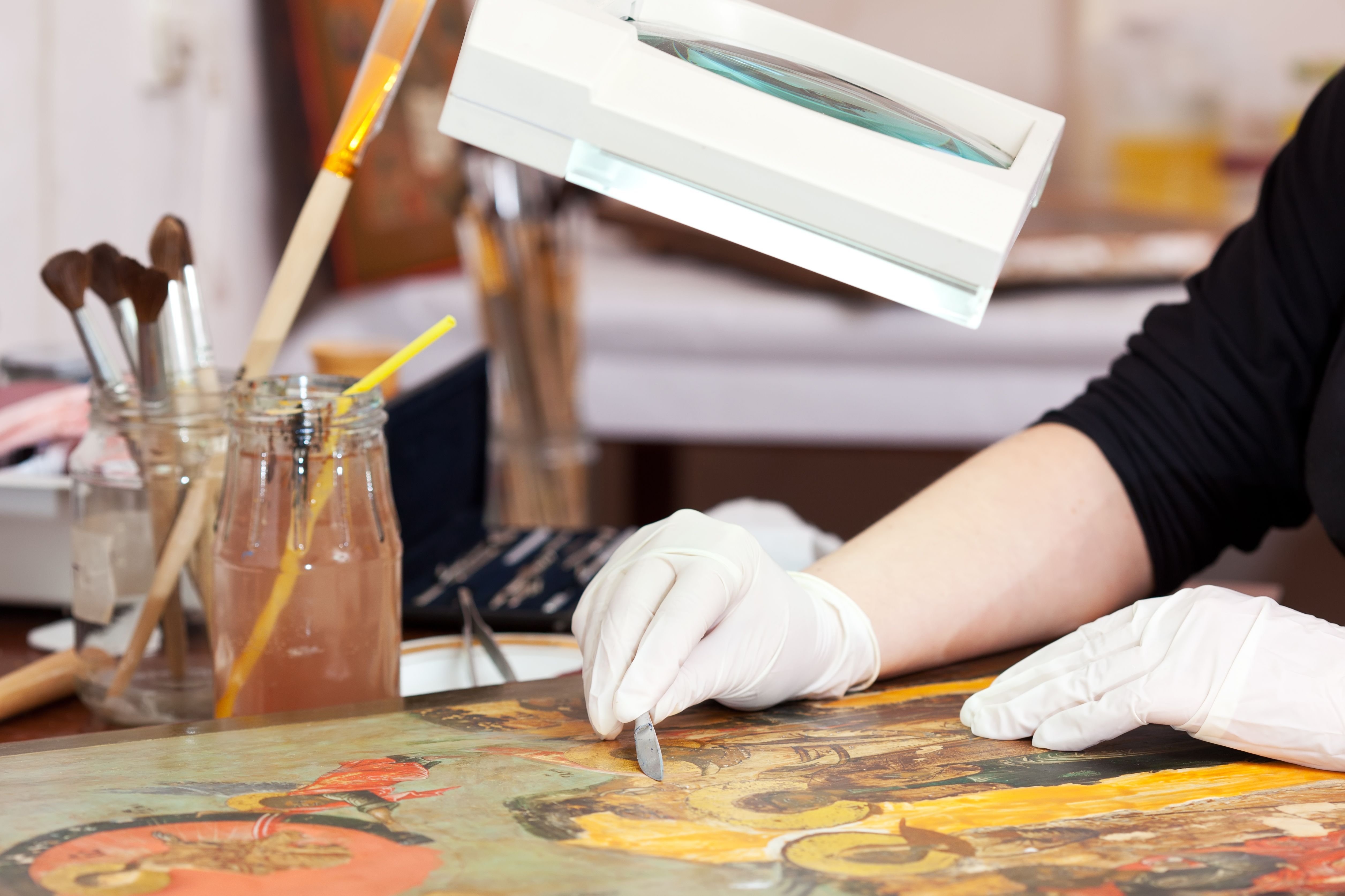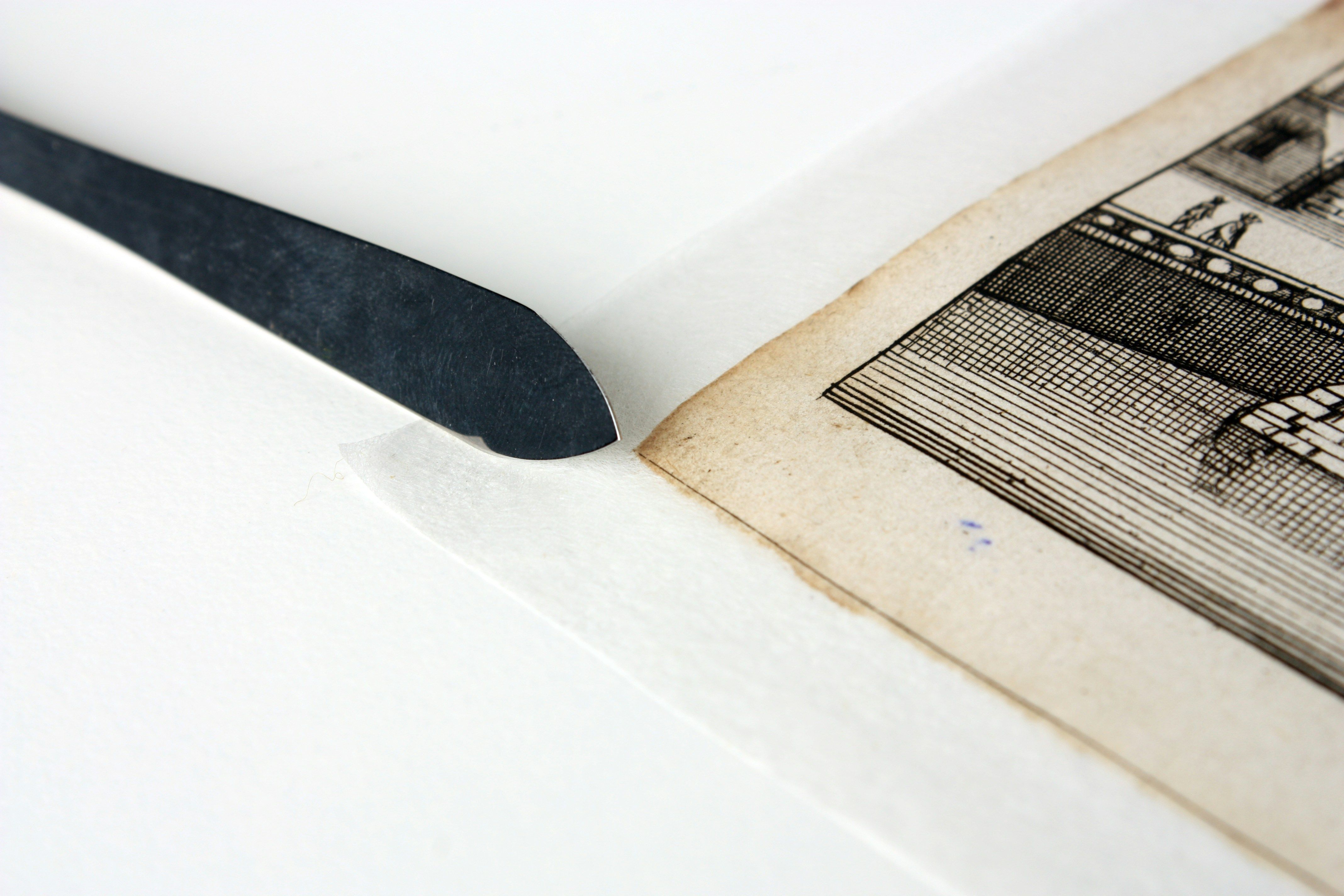
Restoring an Artwork

What is art restoration?
Art restoration is a multifaceted practice that involves a deep understanding of art history, materials, and a keen eye for detail. To begin the restoration process, it is crucial to immerse oneself in the historical context of the artwork, grasping the artist's style and technique. Thorough documentation, including photographs and historical records, serves as a foundation for decision-making throughout the restoration journey.
A comprehensive assessment and analysis follow, combining visual inspection with technical methods such as infrared imaging to reveal hidden details and understand the artwork's structural composition. This phase provides a holistic view of the restoration needs, identifying areas of damage, deterioration, and discolouration.
Cleaning and varnish removal come next, where surface dirt and grime are delicately removed using soft tools and mild solvents. Discoloured varnish layers are carefully taken off, ensuring minimal impact on the original paint. Structural repairs, whether on canvas or wood panels, address tears, holes, warping, and any support structure issues. The goal is to stabilise the artwork for long-term preservation without compromising its integrity.
Inpainting and retouching involve a meticulous process of loss compensation, using reversible materials to fill in gaps and matching colour and texture seamlessly. The challenge lies in maintaining fidelity to the artist's style, avoiding over-restoration that could alter the authentic character of the piece.
The restoration process emphasises reversibility, using materials and techniques that can be undone in the future without causing harm to the artwork. It's essential to document every step, noting materials, techniques, and changes made during the restoration.
Professional advice is invaluable, especially for valuable or culturally significant artworks. Consulting experts and conservators ensure that the restoration aligns with best practices and ethical considerations, respecting the original intent of the artist and preserving the historical integrity of the artwork. Ultimately, preventive conservation measures, such as proper storage and display condition.
 Image by Bearfotos
Image by BearfotosWhat is involved in the restoring process?
Restoring art requires a delicate and skilled approach to preserve the original work while addressing any damage it may have sustained over time. Here is an in-depth walkthrough to art restoration.
Assessment
Examine the Artwork: Carefully inspect the artwork to identify areas of damage, discolouration, or deterioration.
Documentation: Document the current state of the artwork through photographs and detailed notes. This documentation will serve as a reference point throughout the restoration process.
Research
Artistic Style and Technique: Understand the artist's style and the techniques used in creating the artwork. This knowledge will guide your restoration decisions.
Historical Context: Consider the historical context of the piece, including its provenance and any previous restorations.
Cleaning
Surface Cleaning: Remove dust, grime, and other surface contaminants using soft brushes, sponges, or mild solvents. Always test cleaning solutions on a small, inconspicuous area first.
Varnish Removal: If applicable, carefully remove old varnish layers that may have discoloured or yellowed over time. This process should be done with great care to avoid damage to the original paint.
Structural Repairs
Canvas Repair: For paintings on canvas, address tears or holes by using appropriate materials and techniques, such as canvas patches and adhesives.
Panel Repair: For works on wood panels, address any warping, cracking, or wood deterioration. Ensure the stability of the support structure.
 Close-up at the lining/doublage of an antique print. Image by Stéphanie Poppe
Close-up at the lining/doublage of an antique print. Image by Stéphanie PoppeInpainting
Filling and Retouching: Fill in losses with reversible materials, matching the color and texture of the surrounding areas. Retouch damaged or missing paint with meticulous care to match the artist's style.
Consolidation & Protective Coating
Secure Loose Paint: Consolidate loose or flaking paint by applying a consolidant. This helps prevent further paint loss.
Varnishing: Apply a new, reversible varnish to protect the restored surface and provide a consistent finish. The choice of varnish should be made with consideration of the specific needs of the artwork.
Reversibility & Documentation
Use Reversible Materials: Whenever possible, use materials and techniques that can be easily reversed or removed in the future without causing harm to the artwork.
Record Changes: Document all the steps taken during the restoration process. Note materials used, techniques applied, and any changes made to the artwork.
Professional Advice
Consult Experts: If unsure about certain aspects of the restoration process or if dealing with a particularly valuable or historically significant piece, seek advice from conservators or experts in the field.
Ethical Considerations & Conservation
Respect the Original: Strive to preserve the artist's intent and the historical integrity of the artwork. Avoid over-restoration or making irreversible changes.
Storage and Display: Provide appropriate storage and display conditions to prevent future damage. This includes controlling temperature, humidity, and exposure to light.
Art restoration is a highly specialised field, and in many cases, it is advisable to seek the expertise of professional conservators, especially for valuable or culturally significant artworks.
 Restoration with gold leaf. Image by Bearfotos
Restoration with gold leaf. Image by BearfotosWhere can I get my artworks restored?
Graham Bignell Studio Website: www.grahambignellstudio.co.uk Tel: 02077293161 Mobile: 07980119261 Email: info@grahambignellstudio.co.uk Address: Graham Bignell Studio, 45 Coronet Street, London N1 6HD
Fine Art Restoration Co. Website: www.fineart-restoration.co.uk Tel: 0207 112 7576/0122 852 1231 Email: info@fineart-restoration.co.uk Address: South Wing, Somerset House, Strand, London WC2R 1LA/N4 Kingmoor Park Central, Carlisle, Cumbria CA6 4SD
Lumiere Poster Restoration Website: www.lumiereposterrestoration.com Tel: +1 951 242 8369 Email: lumiere9@msn.com Address: 16055 Peninsula Ct, Moreno Valley, CA 92551, United States
Caroline Harrison Conservation Limited Website: www.harrisonconservation.co.uk Tel: 01454 218 918 Email: info@harrisonconservation.co.uk
Simone Gillespie Studio Website: www.simongillespie.com Tel: 020 7493 3900 Email: info@simongillespie.com Address: 104 New Bond Street, London W1S 1SU
Emily O’Reilly ACR Website: www.emilyoreilly.co.uk Tel: 07887 482071 Email: emily@emilyoreilly.co.uk
Foley Schalkx Conservation Website: www.foleyschalkxconservation.com Tel: 07886 901 015/07989 695 882 Email: hello@foleyschalkxconservation.com Address: Leyton E10, a 10 minute walk from Lea Bridge station